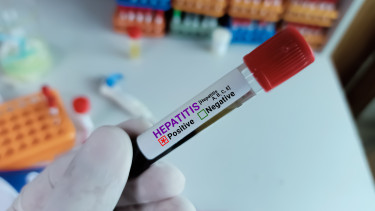COVID-19: Daily fatalities hit new high in fourth 'wave'

As of Monday, without any warning, remark or explanation, the Coronavirus Task Force started to publish only the number of Covid patients in invasive ventilation. The number of patients supported by noninvasive ventilation (NIV) is not published.
In effect, the Coronavirus Task Force has rendered a key metric of the pandemic quasi useless.
Since we would like to maintain the comparability of the number of ventilated Covid patients as intact as possible, based on the previous ratios between the number of patients in hospital and on ventilator we multiply the official figure with 1.4 (+40%) for our statistics. It’s not extremely scientific, but it’s better than not being able to make comparisons at all.

The daily test positivity rate retreated to 24.9% from over 36% a day earlier with 36% more tests performed (42,000). The 3-day percent positive also dropped to 30% from over 32%. As you can see on the charts below, the 3-day / 21-day test positivity rate dipped to under 100% six times, every time on these three 'weekend' days of the last two weeks. It is now up at 134% again. If we want to be certain that the key epidemiological figures are starting to improve, the 7-day average of the 3-d/21-d positivity rate would need to go south of the 100% mark. It is currently up at 109.35% from 108.5% yesterday, but it is well under 160% recorded in late October.
The abatement of the current 'wave' will first be indicated by the percent positive peaking and retreating. It will be followed by a drop in daily new COVID-19 cases, hospitalisations, the number of ventilated patients, and eventually coronavirus-related deaths.
Changes in the positivity rate are reflected in the other epidemiological data with a delay:
- new cases – 3 to 5 days
- hospitalisations – 7 to 10 days
- patients on ventilator – 12 to 15 days
- deaths – 18 to 22 days.



The positivity rate is likely to go high which entails a rise in the number of Covid deaths too. As regards the latter, administration most likely cannot keep up with reality therefore the divide between the official figures provided by the Coronavirus Task Force and the Central Statistical Office's (KSH) mortality figures to be released several months later will keep widening.
Given the poor quality of the input data, uncertainties in forecasting are huge. In a best-case scenario, the current 'wave' will peak (in terms of the percent positive) within a week, but it is also possible that it will not do so before 15 December, in which case Covid deaths would not peak before 10 January.
Estimating Covid fatalities
Based on the number of daily new confirmed COVID-19 cases we have presented a simple model by which we can estimate how many daily Covid deaths we could have in 20 days. The updated projections are in the table below. We have applied the model to daily figures, as well as to 3-day and 7-day averages. All three show that we should expect the number of daily fatalities to keep on rising.
It is a generally accepted and proven fact worldwide that the number of COVID-19 fatalities tracks changes in the number of daily new confirmed cases with a cc. 20-day delay. The model is exceedingly simple: we divide the number of new cases reported today (for the previous day) with the number of daily cases reported 20 days earlier, and multiply this figure with the number of deaths reported today. That should be roughly the number of deaths authorities will report 20 days from now.

Using the multipliers we get by comparing the current death figures with those 20 days ago we find that the above forecasts are conservative. Multiplying the latest number of fatalities with the increase between 10 Nov and 30 Nov we would have 50%, 57% and 26% higher estimates for 21 Dec for the daily, 3-day average and 7-day average figures, respectively.
Note that these are all mortality data expected to be reported by the Coronavirus Task Force. The mortality stats of the Central Statistical Office (KSH) to be published (several months) later will show a lot more deaths. Needless to say, there is no way to forecast the number of Covid deaths with pinpoint accuracy, but these forecasts should at least give us an idea of what is to come.



Cover photo: Getty Images









